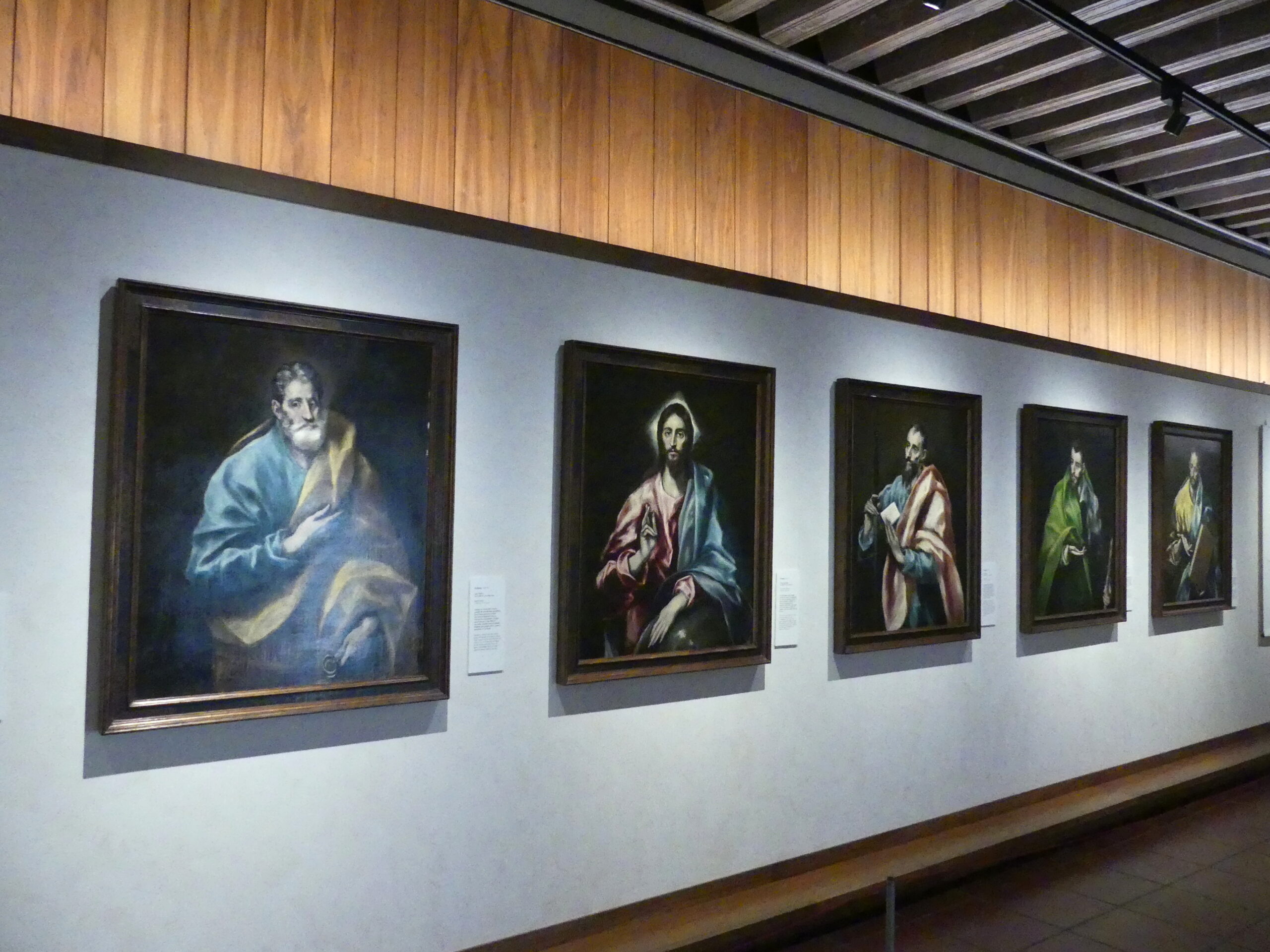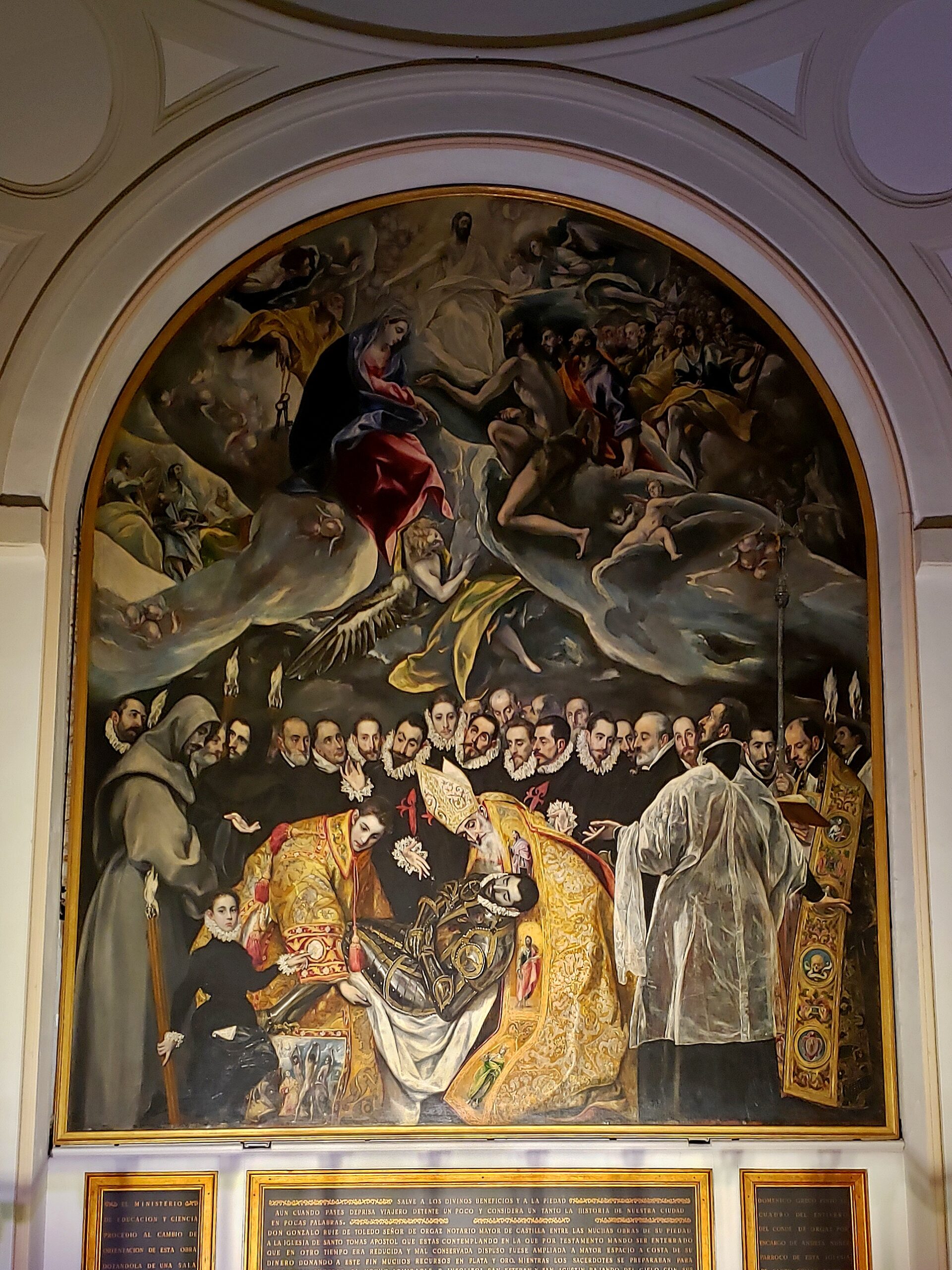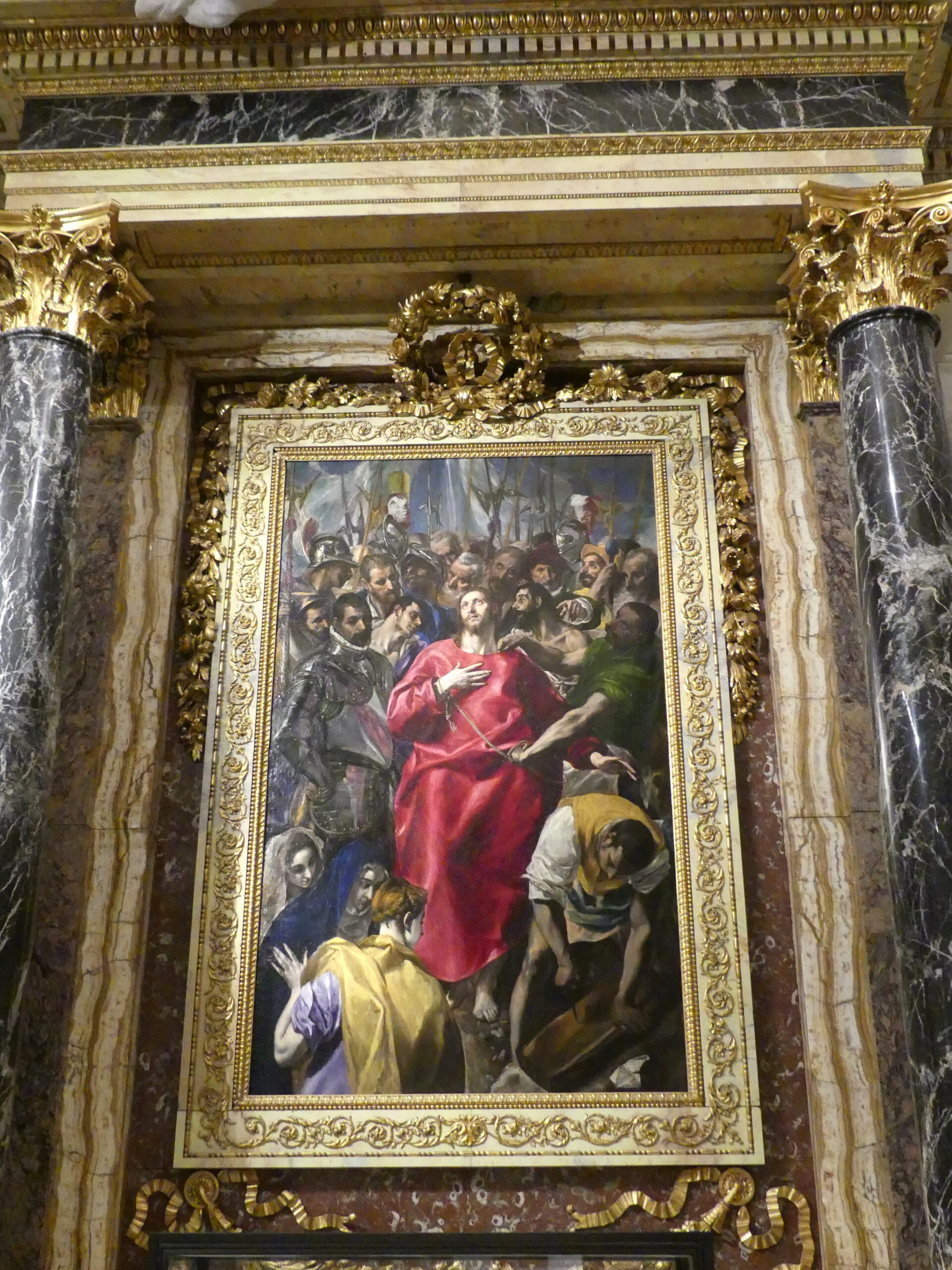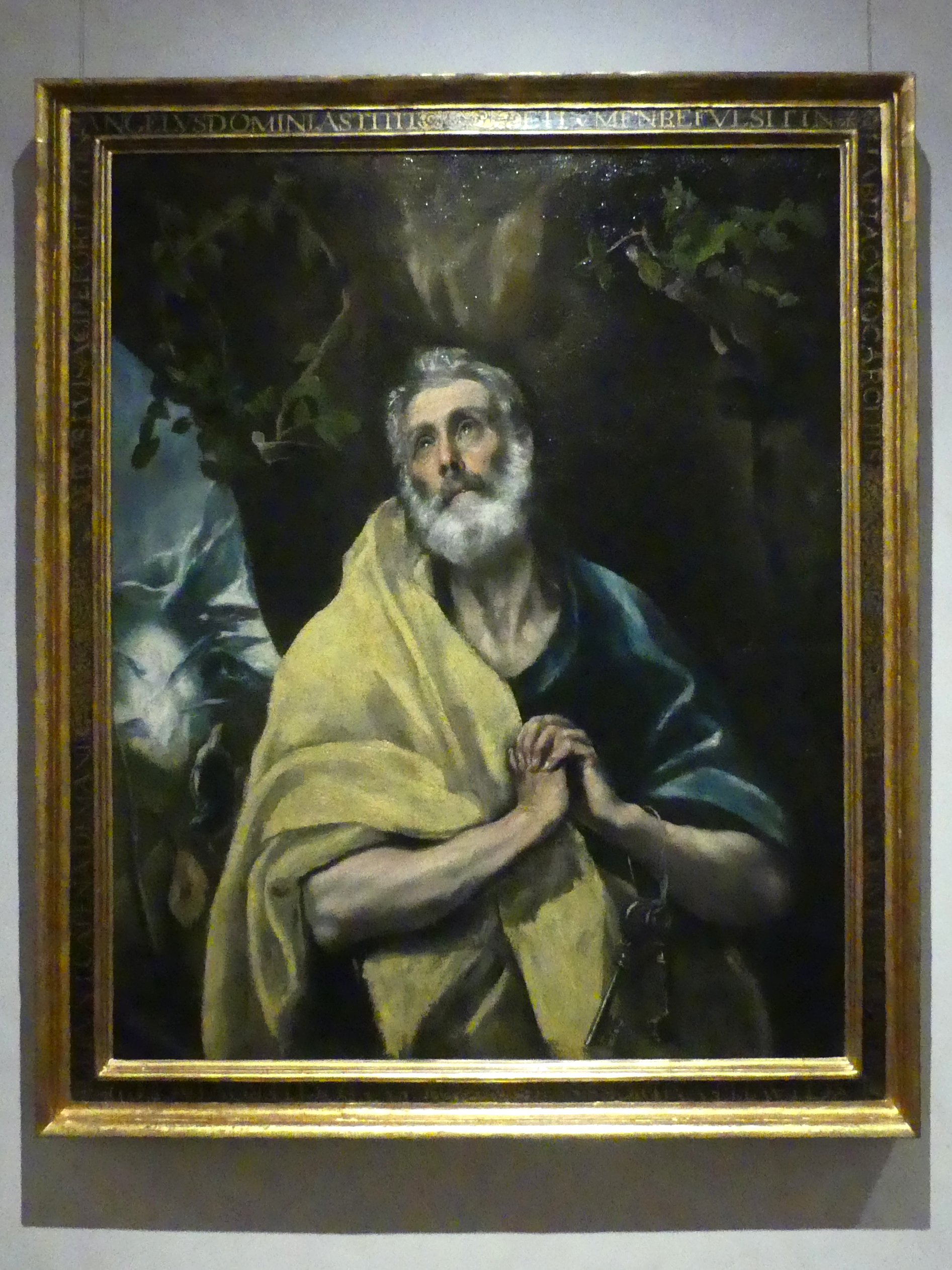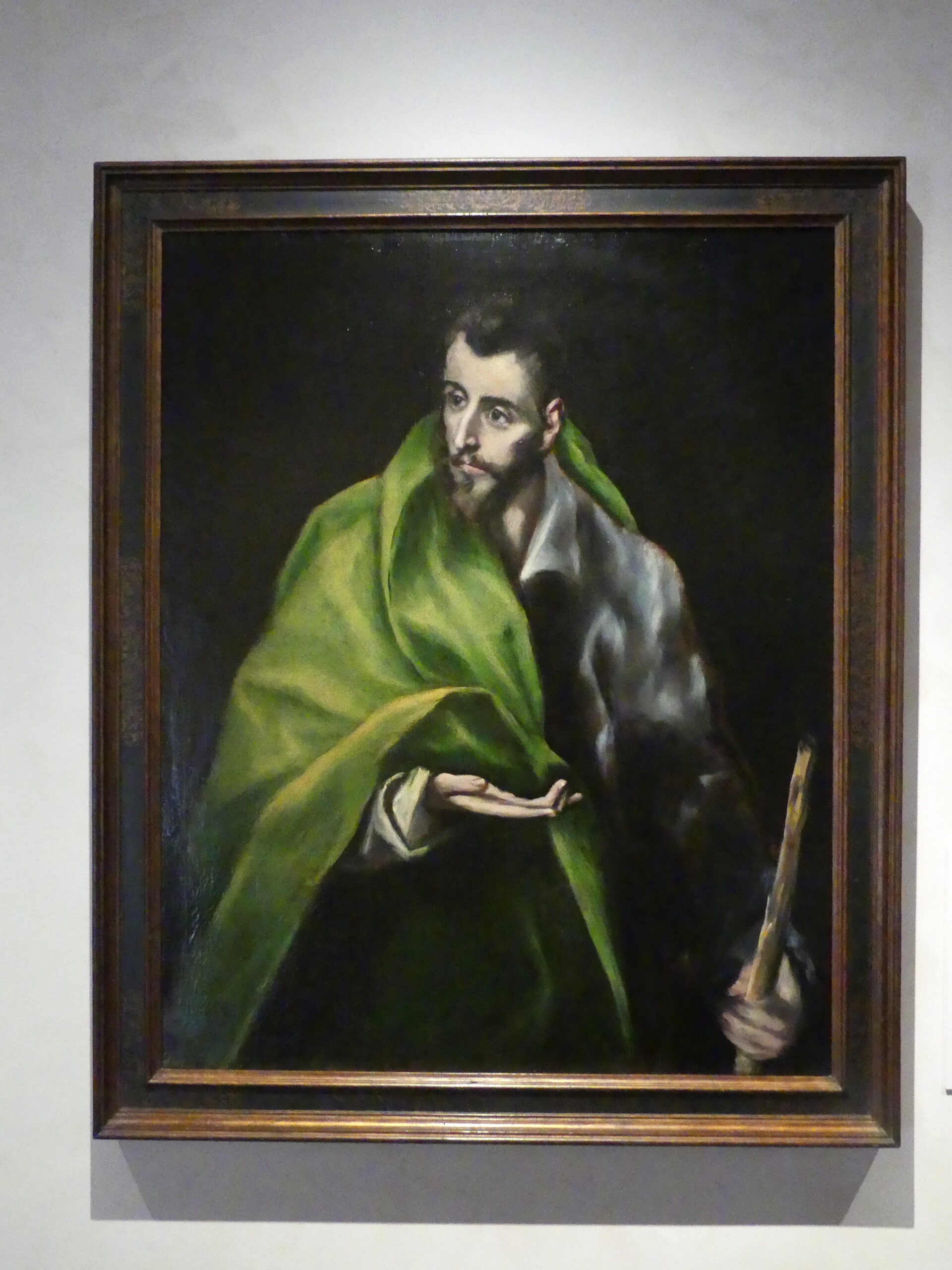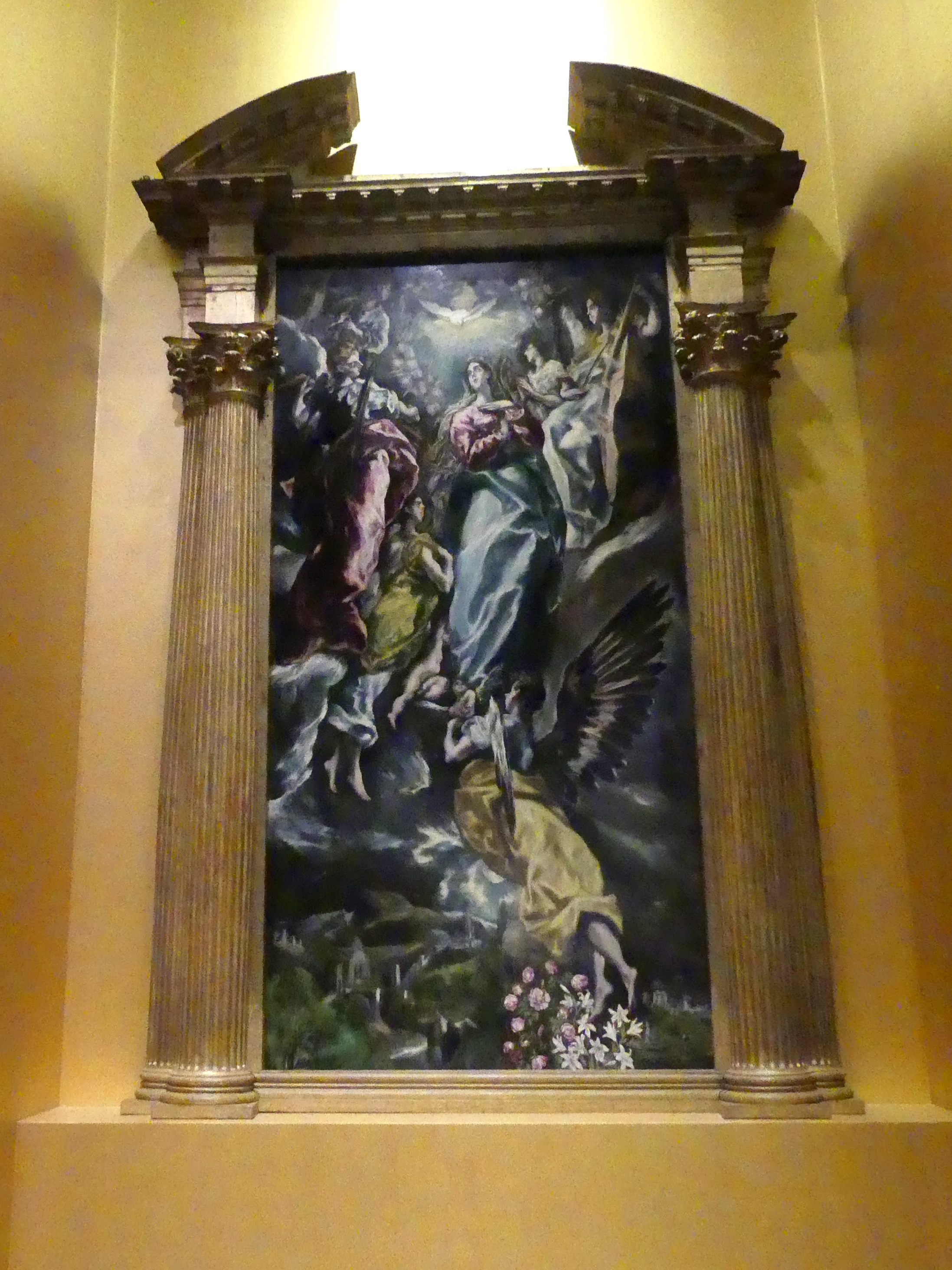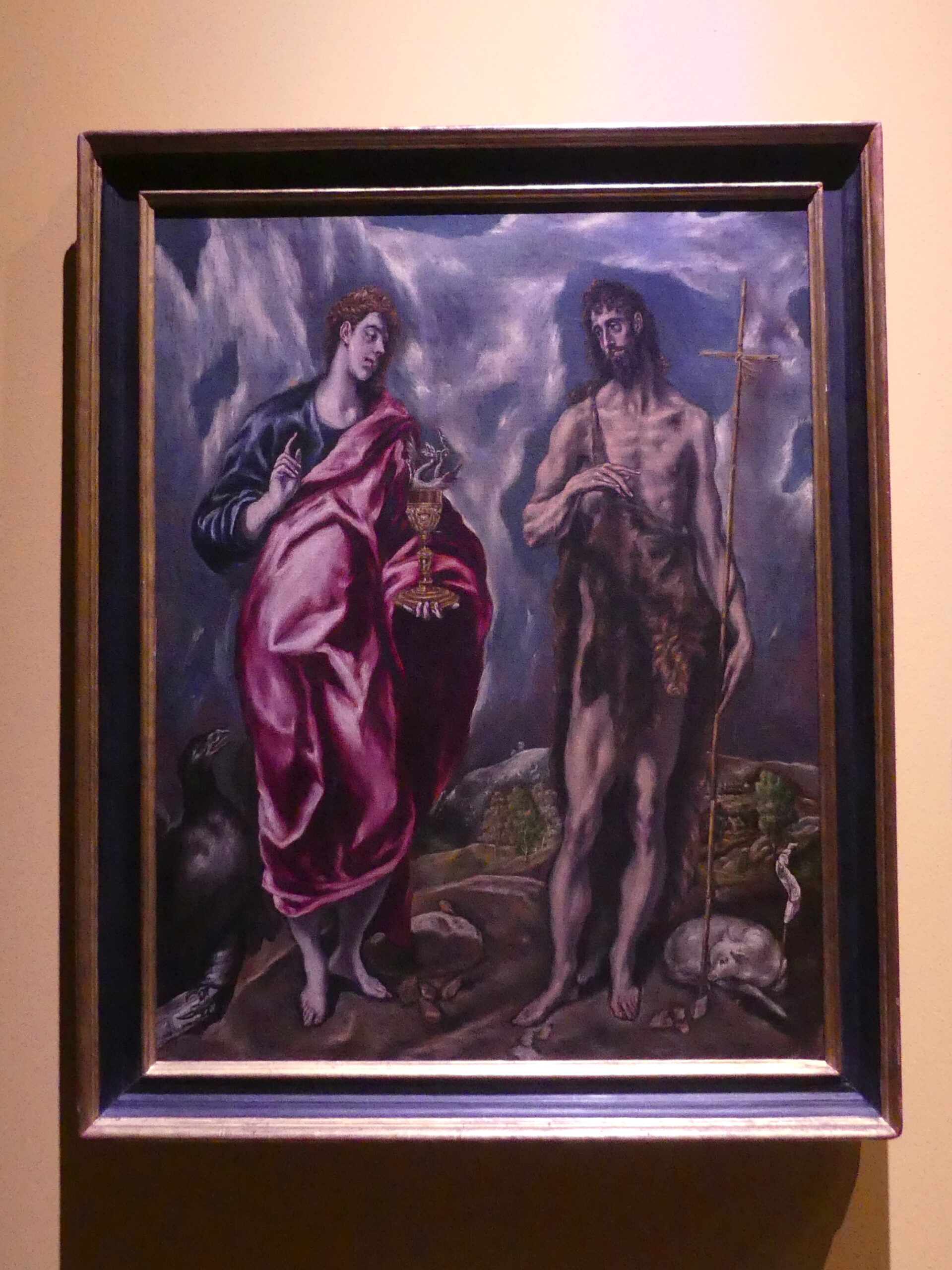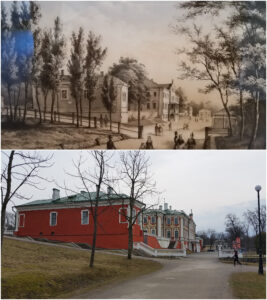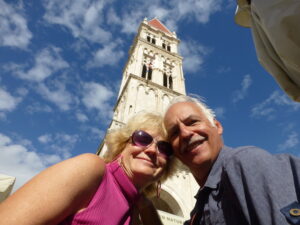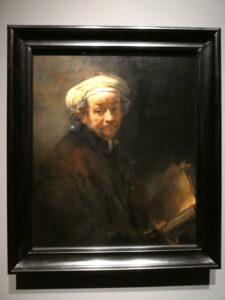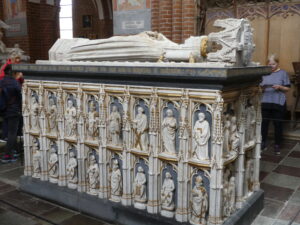In brief: We located paintings by El Greco across Toledo, from its principal churches to the El Greco Museum.
Toledo still hosts many paintings by El Greco, the Cretan artist who lived the second half of his life there until 1614, a contemporary of Cervantes and Shakespeare. We traced his work across Toledo, notably in the El Greco Museum and the city’s major churches. Much emulated by Picasso and other moderns, El Greco struck us anew with his work’s intensity of color and emotional expressiveness. And we could see how the unusually elongated and otherworldly appearance of his figures emphasized their spiritual qualities.
A steady crowd of visitors throngs the Church of San Tome, the artist’s own church, to view El Greco’s painted crowd of nearly life-sized and fully realized figures. This complex masterpiece – Burial of the Count of Orgaz – is still in place where it was painted.
It depicts a miraculous legend about the patron of the church, that Saint Stephen and Saint Augustine came from the heavens to bury him.
The stolidity of the earthly below, thronged by sober gentlemen, dramatically contrasts with the ebullient celebration by Jesus, Mary, and the saints about the ascent of the Count’s soul to heaven. Even El Greco himself attends the event, the seventh figure from the left, slyly placed above the delicate hand.
“The Disrobing of Christ” (on display at the Toledo Cathedral) captures the moment when the figure on the right is about to strip Jesus in preparation for the crucifixion. The clashing poles, and the contentious, often grotesque figures of the crowd around Christ, contrast dramatically with his beatific acceptance, yet human dismay. The three Marys stare at the cross being readied by the figure at the lower right, highlight by his yellow tunic.
The intense red of Christ’s robe, symbolic of his sacrifice, also markedly sets him apart from the crowd’s dull and dark coloration. Though this is a huge canvas, the compression of so many figures in the space heightens the drama.
Here is part of the room in the El Greco museum featuring his 12 apostolic portraits as well as Jesus, who is second from the left. It’s one of only three sets painted by the artist. Each is individualized, enhanced in stature by their voluminous robes, and subtly distinct.
By the time we saw another set on display at Toledo’s magnificent Cathedral, we felt close to these men.
“The Tears of St. Peter,” in Toledo’s El Greco Museum, shows the apostle as saint and sinner. He is set against a dark background which is a bit obscure, but shows the moment when Mary hears from an angel about Christ’s resurrection.
The expression on his face, along with the watery eyes raised to heaven and the contorted hands in prayer vividly show him contending with hope as well as distress in contemplating redemption for his sins. Divine light seems to hover over his head.
None of the other apostilles was dramatized in such a way. So, to us, this was the most intense of all of the apostolic portraits.
Another of our favorites among the apostle paintings was San Tiago (or Saint James), who is revered in Spain (and his namesake town) for bringing Christianity there.
We couldn’t stop staring at James’ own penetrating stare, filled with questioning and humility that are underscored by his open hand. As befits his wandering far from Jerusalem to spread the word, as well as the millions of pilgrims that make the walk to Compostela, he holds a pilgrim’s staff.
Another famous painting at the museum is El Greco’s detailed map of Toledo, with various fantastical adornments. You can find that work in the article about our visit to the city. (Click here for that post.)
A choir of cherubs and saintly musicians (with recognizable instruments) hail the “Immaculate Conception.” The dove brings the spirit to Mary’s upturned face and colorful angels uplift her in elation from the bounds of the natural world. El Greco even designed the classical framing of the painting, now on display at the Museum of Santa Cruz.
Also at Santa Cruz is this late work by El Greco of John the Baptist and John the Evangelist elongates the figures to stress their otherworldly qualities, though the Baptist on the right seems to be witnessing all the sorrows of the world.
They stand forth from oddly dark, purplish and stormy swaths of color in a landscape out of Dali or Chagall.
(To enlarge any picture above, click on it. Also, for more pictures from Spain, CLICK HERE to view the slideshow at the end of the itinerary page.)


